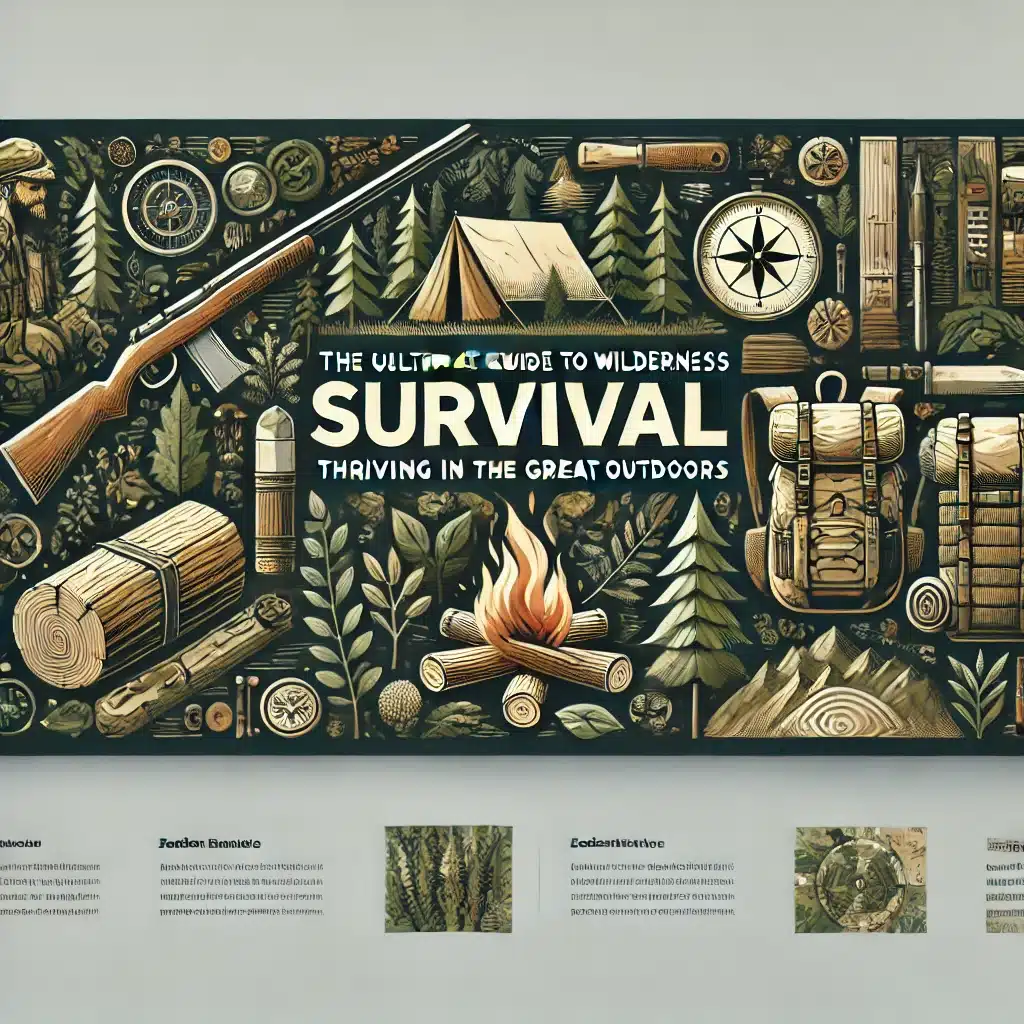The Ultimate Guide to Wilderness Survival: Thriving in the Great Outdoors

Introduction to Wilderness Survival
Surviving in the wilderness requires a unique set of skills and knowledge. Whether you’re an experienced outdoorsman or a novice adventurer, being prepared for the unexpected can mean the difference between life and death. This guide will provide you with essential strategies and tools to thrive in the great outdoors, ensuring you stay safe and resourceful in the wild.
Understanding Wilderness Risks
The wilderness is beautiful, but it can also be unpredictable and dangerous. Here are some key risks to be aware of:
1. Exposure to the Elements
Weather conditions in the wilderness can change rapidly. Exposure to extreme heat, cold, rain, or wind can lead to hypothermia, heatstroke, or dehydration. Knowing how to protect yourself from the elements is crucial.
2. Wildlife Encounters
Encounters with wild animals can be dangerous. While most animals avoid humans, some may become aggressive if they feel threatened. Understanding how to behave around wildlife and how to secure your campsite can help you avoid dangerous encounters.
3. Navigation Challenges
Getting lost in the wilderness is a real danger. Without proper navigation skills, you could find yourself disoriented and unable to find your way back to safety. Knowing how to use a map and compass, as well as recognizing natural landmarks, is essential.
Preparing for Wilderness Survival
Preparation is the key to thriving in the wilderness. Here are some steps you can take:
1. Pack a Wilderness Survival Kit
A well-stocked wilderness survival kit is essential for any outdoor adventure. Include items like a first aid kit, fire-starting tools, a knife, a map, and a compass. Make sure your kit is tailored to the specific environment you’ll be exploring.
2. Learn Basic Survival Skills
Familiarize yourself with basic survival skills such as building a shelter, finding water, and starting a fire. These skills can keep you alive if you’re stranded or lost in the wilderness.
3. Understand the Local Environment
Research the area you’ll be exploring. Understand the local flora and fauna, weather patterns, and potential hazards. This knowledge can help you avoid dangers and make informed decisions.
Finding Food and Water in the Wild
Securing food and water is critical for survival. Here’s how to find these essential resources in the wilderness:
1. Finding Water
Water is your top priority. Look for natural sources such as rivers, streams, or lakes. If you can’t find water, collect dew from plants or dig for groundwater. Always purify water before drinking to avoid illness.
2. Foraging for Food
Foraging for wild plants, berries, and nuts can provide essential nutrients. Learn to identify edible plants in your area, but be cautious—many plants can be toxic if misidentified.
3. Hunting and Fishing
If you have the skills and tools, hunting and fishing can provide a reliable source of protein. Set traps, use a fishing line, or create makeshift hunting tools to catch small game or fish.
Building Shelter and Fire
Shelter and fire are crucial for protection from the elements and wildlife. Here’s how to build both:
1. Building a Shelter
Your shelter should provide protection from wind, rain, and cold. Use natural materials like branches, leaves, and grass to build a lean-to, debris hut, or other simple structure. Ensure your shelter is well-insulated and sturdy.
2. Starting a Fire
Fire provides warmth, light, and a way to cook food. Use a fire starter, matches, or a lighter to ignite dry kindling. If you don’t have these tools, create a fire using friction, such as the bow drill method. Always build your fire in a safe location, away from flammable materials.
Navigating the Wilderness
Navigating through the wilderness requires careful planning and awareness. Here’s how to stay on course:
1. Using a Map and Compass
A map and compass are essential tools for wilderness navigation. Learn how to read topographical maps and use a compass to determine your direction. Practice these skills before heading into the wild.
2. Recognizing Natural Landmarks
Use natural landmarks like mountains, rivers, and rock formations to orient yourself. These can serve as guides to help you find your way back to camp or civilization.
3. Tracking Your Route
Leave markers or use natural features to track your route. This will help you avoid getting lost and make it easier to retrace your steps if necessary.
Recommended Wilderness Survival Gear
Jake’s Story: Chapter 21 – The Call of the Wild
Chapter 21: The Call of the Wild
Jake had always felt a deep connection to the wilderness, but now, it was more than just a place of beauty—it was a place of survival. With nothing but his survival kit and the skills he had honed over the years, Jake ventured deeper into the wild. The trees, the mountains, and the rivers all became his guides. As he built his shelter and started a fire, Jake knew that the wilderness wasn’t just a challenge to be conquered—it was a world to be understood and respected.
Chapter 22: Embracing the Wilderness
Each day in the wilderness brought new lessons and challenges, but Jake felt more alive than ever. The solitude, the raw beauty of nature, and the sense of self-reliance were intoxicating. He knew that his time in the wild was not just about surviving; it was about embracing a simpler, more meaningful way of life. As the days turned into weeks, Jake felt a deep sense of peace, knowing that he had not only survived but thrived in the great outdoors.
Explore More Essential Guides
Ready to expand your prepping knowledge? Dive into our other comprehensive guides to ensure you’re fully prepared for any situation.



